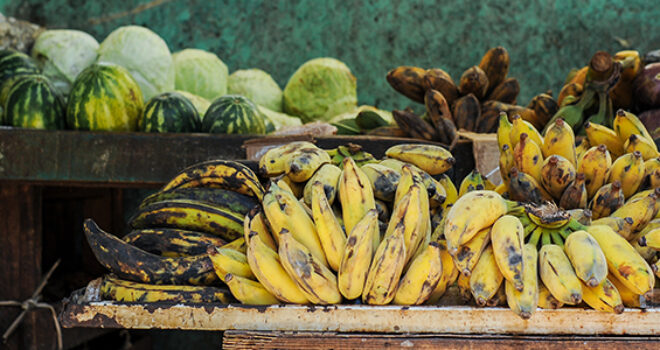When the Soviet Union collapsed, Cuba was struck by a severe food crisis. To save the country, a large-scale urban farming plan was launched that has turned Cuba into a pioneer for its sustainable and resilient food system.
In Cuba, urban agriculture has become a highly productive and resilient strategy to provide high-quality, fair food for the island population, with respect for the environment. In 2013, there were more than 4,000 urban farms in Cuban cities, as well as 385,000 vegetable gardens and 6,000 intensive gardens producing a total of almost 1.2 million tonnes of vegetables and herbs, which equals over 50% of the consumption of these products in urban areas. The agricultural land is managed mainly by local cooperatives. Public policies play a crucial role in managing and optimising the production and distribution of the foods produced, and in training all stakeholders involved in this food system.
The food crisis in Cuba
Yet things used to be quite different. In the late 1950s, Cuban agriculture was based on a large-scale industrial model. A mechanised monoculture prevailed, fundamentally centred on sugar cane cultivation. In 1991, with the collapse of the Soviet Union, Cuba lost its main trade partner. The United States also imposed a total embargo that completely isolated the island. In the three years that followed, Cuban people saw their daily calorie intake decrease by 30%, resulting in an average weight loss of 14 kg per person.
Urban farming as an emergency response
Faced with the threat of famine, the Cuban government implemented an austerity plan, which imposed food rationing on the population. Scientists and farmers were asked to join forces to completely transform the country’s food system. Countless reforms were launched, including the development of organic pesticides and crop rotation. To deal with the absence of fuel for transport and the lack of refrigeration, the Cubans started growing crops on vacant plots in the cities and suburbs. Consequently, in the early 2000s, 90% of fruits and vegetables in Havana were cultivated in organic city farms with small shops called organopónicos. This new food system freed agriculture from state control, and soon a model of supply and demand was established.
This national rescue plan got the country out of the crisis and resulted in the development of one of the most advanced urban agriculture systems in the world based on the principle of agroecology.



 Bell pepper
Bell pepper  Bean sprouts
Bean sprouts  Vegetable garden: growing dandelion
Vegetable garden: growing dandelion 









